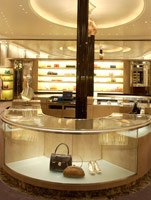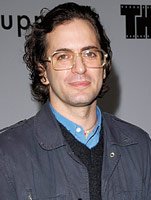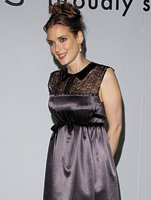Marc Jacobs Continues West Melrose Avenue's Fashionable Shift
Marni follows Marc; Paul Smith is next
Will Melrose Avenue ever be able to get back to business as usual? Recent star-studded openings of designer stores may change the character and the business of the street.
New York–based designer Marc Jacobs feted the opening of his two major stores on Melrose Avenue on March 17 with a gala that included Hollywood luminaries such as Francis Ford Coppola, Hilary Duff and Winona Ryder.
On March 22, Italian design house Marni celebrated the opening of its first Los An geles boutique. It’s on Melrose Place, one block down from the Marc Jacobs collection store. Actresses Claire Danes, Maggie Gyllenhaal and Brittany Murphy were among those who toasted the store’s debut.
And hip English designer Paul Smith is scheduled to open a store on Melrose later this year, according to company sources in the United Kingdom.
These newcomers to the west end of Melrose, between North San Vicente Boulevard and Fairfax Avenue, are changing the neighborhood’s character.
Fashionable shift
Fashion has always been important on this street. The Ron Herman–Fred Segal boutique at Melrose Avenue and Crescent Heights Boulevard pioneered the wave of specialty retailing in Los Angeles more than 20 years ago. But the western edge of Melrose Avenue was dominated by a collection of furniture stores and architectural firms anchored by the Pacific Design Center, a complex of 130 showrooms dedicated to furniture and interior design, not clothes.
Designers such as John Varvatos chose to open stores on the west end of Melrose more than 18 months ago, and the place has become a magnet for some of fashion’s high marquee names.
Prices for commercial space at the west end have slowly increased in the past year to $5 per square foot, compared with $3.50 to $4 one year ago, according to Robb Bader, a sales associate with Beverly Hills–based Sachse Real Estate Co. Inc.
Neighboring shopping thoroughfare Robertson Boulevard is home to well-established shopping districts and higher rents, at $10 per square foot, Bader said.
“The rents are frankly cheaper than a Third Street Promenade [in Santa Monica, Calif.] or a Robertson,” Bader said. “Fashion tenants are taking advantage of that. The more that come in, the more it’s a chain reaction.”
But fashion’s love affair with the west end of Melrose started because the area gives stores the cachet of being sophisticated and separate from the pack, said Marni USA Vice President Luca Voarino.
He said he decided to build a store in the neighborhood, which he first looked at in January 2004, because it is unusual. “It’s not a ’fashion street,’” Voarino said of the area, where thriving businesses include photography galleries and businesses such as Knit Cafeacute;, a cafeacute; catering to knitting circles.
While many said the high-profile designers will change the neighborhood, the question is how. Darren Gold, coowner of new men’s boutique Alpha, noticed more foot traffic in the area since Marc Jacobs’ opening. He has also seen more visitors from the Westside and even from Orange County, not just the typical crowd of shoppers from West Hollywood and the Fairfax District.
“Once Paul Smith opens, it’s going to become more of a fashion destination,” Gold said. “It could become like Robertson, but it needs more restaurants. Or it could become more like SoHo or the East Village.”
The succession of newcomers to the west end of Melrose, between North San Vicente Boulevard and Fairfax Avenue, have longtime fashion retailers and real estate professionals wondering if these designers will make the street into the next neon-lit shopping district like Robertson Boulevard or if these designers will help keep the street’s unique character.
The area around the Pacific Design Center only has one restaurant open during daytime hours, the Urth Cafeacute;. Bader said the lack of daytime restaurant options and tight parking situations could hurt the area’s chances of becoming a fashion shopping mecca like Robertson.
The place might not change or might change slowly, according to real estate analyst Larry Kosmont, president and chief executive officer of Los Angeles–based Lee Kosmont Advisory Services.
“Stores like Marc Jacobs typically have limited impact from the standpoint of new rents and new significant tenants in the short term,” he said. “In an area such as this, most buildings are owned by different owners, and thus the leased space turns over at different times. Consequently, diversity in tenancy and tenant trends prevails. However, one could see some new food [establishments] or other symbiotic users that would seek to poach off the new activity from Marc Jacobs.”
Gordon Morikawa, co-owner of fashion boutique Xin on Melrose near Crescent Heights, said most retailers look forward to the notoriety and extra traffic that could come from Marc Jacobs. But he said he thinks the area’s character will remain the same.
“It’s low-key,” he said. “It’s not glitzy.”
























